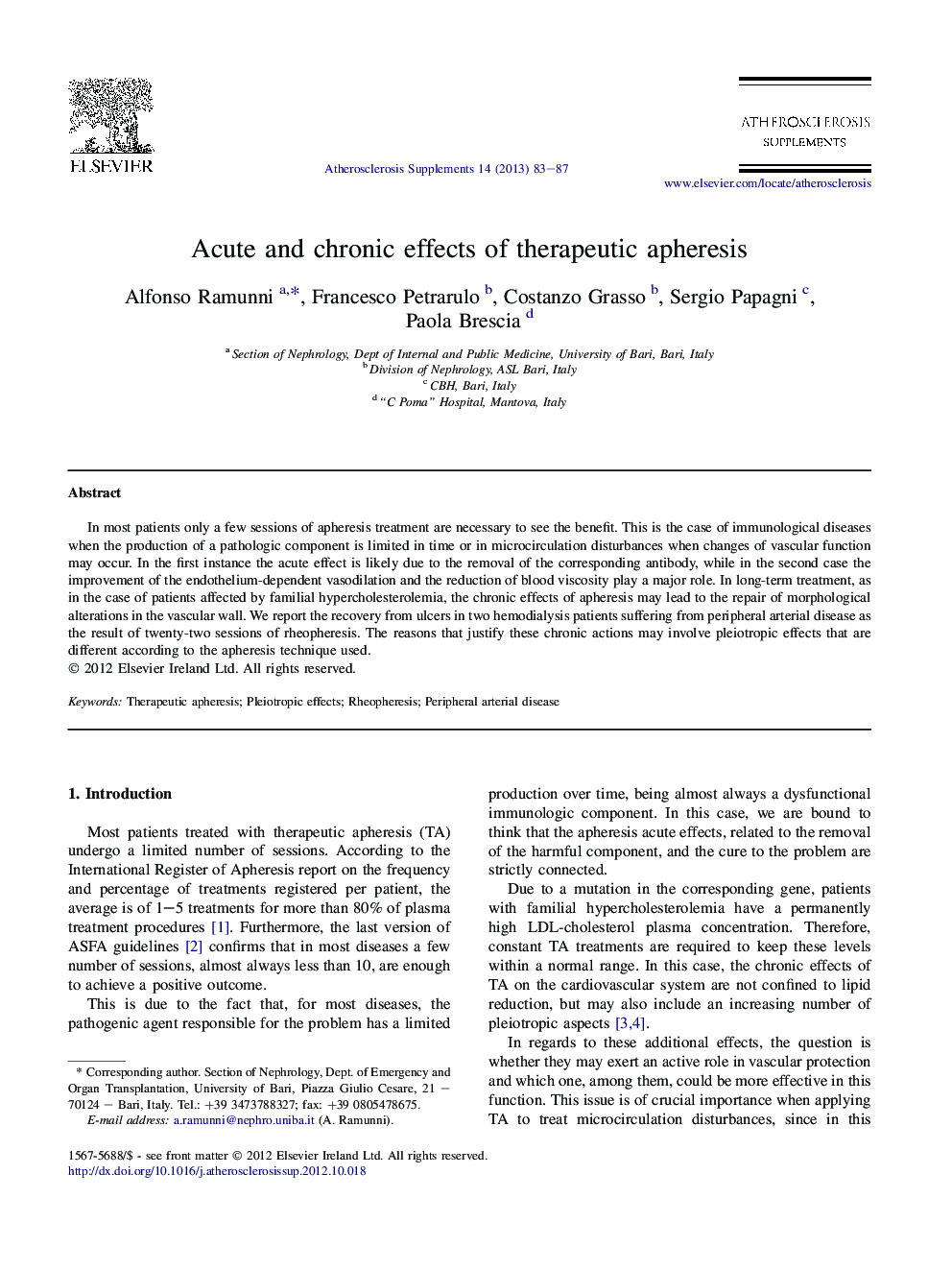| Article ID | Journal | Published Year | Pages | File Type |
|---|---|---|---|---|
| 2895638 | Atherosclerosis Supplements | 2013 | 5 Pages |
In most patients only a few sessions of apheresis treatment are necessary to see the benefit. This is the case of immunological diseases when the production of a pathologic component is limited in time or in microcirculation disturbances when changes of vascular function may occur. In the first instance the acute effect is likely due to the removal of the corresponding antibody, while in the second case the improvement of the endothelium-dependent vasodilation and the reduction of blood viscosity play a major role. In long-term treatment, as in the case of patients affected by familial hypercholesterolemia, the chronic effects of apheresis may lead to the repair of morphological alterations in the vascular wall. We report the recovery from ulcers in two hemodialysis patients suffering from peripheral arterial disease as the result of twenty-two sessions of rheopheresis. The reasons that justify these chronic actions may involve pleiotropic effects that are different according to the apheresis technique used.
